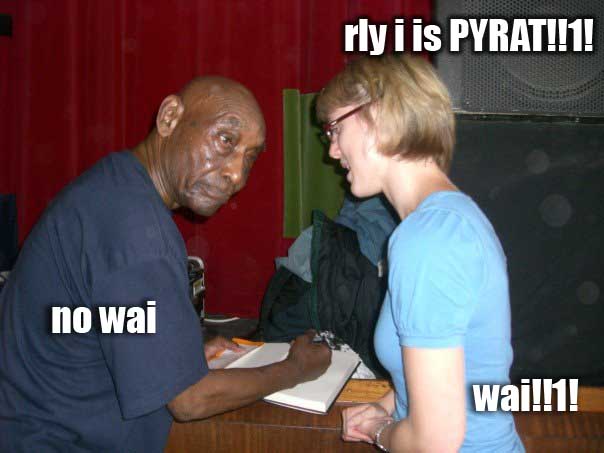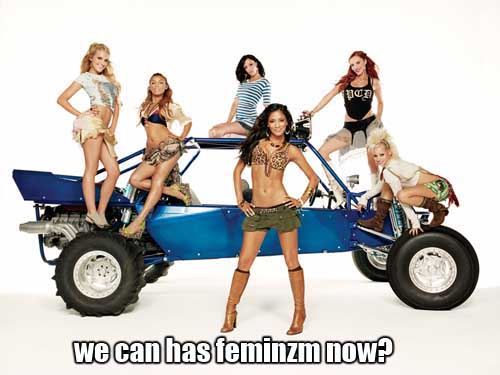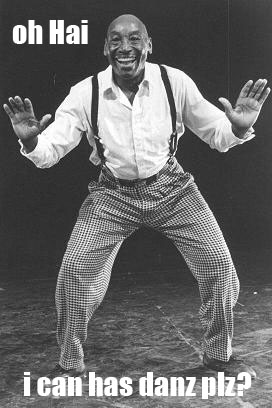
we can has feminzm now k thx

stealing other people’s ideas when I should be finding photos of Britney Spears for work.
friday frankie blogging
this will mean nothing to non dancers.

argh! another cult!
Facebook has eaten my life. I’m trying to write lectures but. can’t. stop. checking. wall.
argh!
facebook = virus!
Listening to this discussion about Facebook, I was struck by the guy’s description of face to face and telephone communication ‘inefficient’.
The entire presentation emphasises ‘efficency’ in communicative and networking practices. An interesting project for someone who’s interested in how men and women and different people communicate in person and online?
John Frow = fushizzle

The paper that made hardened ackas cry like babies has been on my mind for weeks now… hell, since December last year when I heard the Fushizz give it (or bring it, depending).
“unbelievable teaching tool!”
I’ve been spending a fair bit of time on YouTube lately – can you say
“Unbelievable teaching tool!”
Why, yes I can.
But while there’s a whole host of fantastic things on there, from 1980s Solo ads (go solo man, go) and weird Japanese ads for McDonalds, some of the very weirdest things start off extremely normal.
Rudolph Valentino: tango legs
Ok, so I’m a bit of a tango nut (kinda lapsed). I’ve been reading about Rudolph Valentino and how popular he was for ages – it’s a stock story in cinema studies: Valentino was so hawt, the chicks dug him, he was the first real male star, chicks really really thought he was hawt, etc etc etc.
I’ve looked at the photos and thought ‘yeah, whatever. dood wears too much makeup for me but whatever floats your boat, 20s chicks’
UNTIL
I went and watched some clips of him to find one for a lecture I’m doing on celebrity.
Check THIS out. They used to call him ‘Tango Legs’ and now I see why. He is one hot dancer. He’s all rough and manly, but he can dance like a mo-fo. He’s all about that good, sweet connection and the smoldering facial expressions.
Valentino is so hawt in this clip I’d totally have him. And spurs! He’s tangoing in spurs! I love the way his partner is so overcome by his hawt dancing body that she almost swoons… and then he grabs her and kisses her and I am so with her.
Dang!
community media r us
I’m teaching this subject on the media this semester, right?
So it starts with a fairly ordinary introduction to basic media analysis skills and tools – helloooooo semiotics. Hello advertising. Hello COWBOYS!
Then we move to ‘the public sphere’, celebrity, media ownership and regulation. And then we end with 4 lectures on new media. This section is partly to do with things like media convergence and Big Brother, but also (and far more interestingly), community media and culture jamming. This is where my interest lies.
Now, firstly, I just want to note my reservations about this structure. It suggests that the internet has suddenly freed ‘the media’ from the grip of mega media corps, and that because we’re all using laptops we’re suddenly all free.
Which, as anyone who’s paid attention to who’s actually using the internet and computers knows, is patent bullshit. The same old collusions of class and social power are at work here – the internet demands literacy. The internet demands cash for computer gear (or internet cafe time). The internet demands time. And just because we’re getting online, don’t mean we’re not seeing the same old racism/sexism/isms getting about.
This whole internet = democracy also ignores the fact that people have been getting radical with media since… forever. Hello political pamphlets. Hello SOAPBOX. And perhaps more importantly, there are media which are far more amenable to serious social change than the internet – go radio, go! Unlike the internet, radio doesn’t demand literacy, the technology is cheap as chips, and a whole group of people can happily use just one radio. There is a substantial body of literature discussing media in developing countries (media development studies type action), and while it really fascinates me, I really don’t know a lot about it.
But there’s no denying the fascination of the internet for kids who’re interested in the media and its role in democracy.
One of our lectures this semester is specifically concerned with old and new media in times of war. I’m imagining there’ll be plenty of talk about propaganda, Bush and Howard and telly and newd. And because I’m the lecturer, I know there’ll be some nice stuff about YouTube and the middle east.
But I have to go do some serious work now, so I can’t carry on and make this the interesting discussion about teaching resistance and community media and YouTube that I had planned.
So go and read this article about footage of detention centres on YouTube, then go to YouTube and search for detention centres in Australia and let me know what you find, ok?

